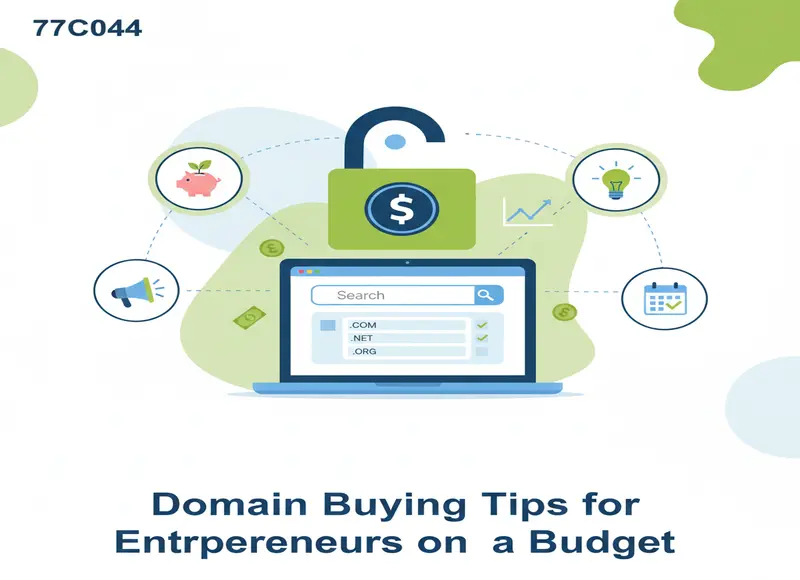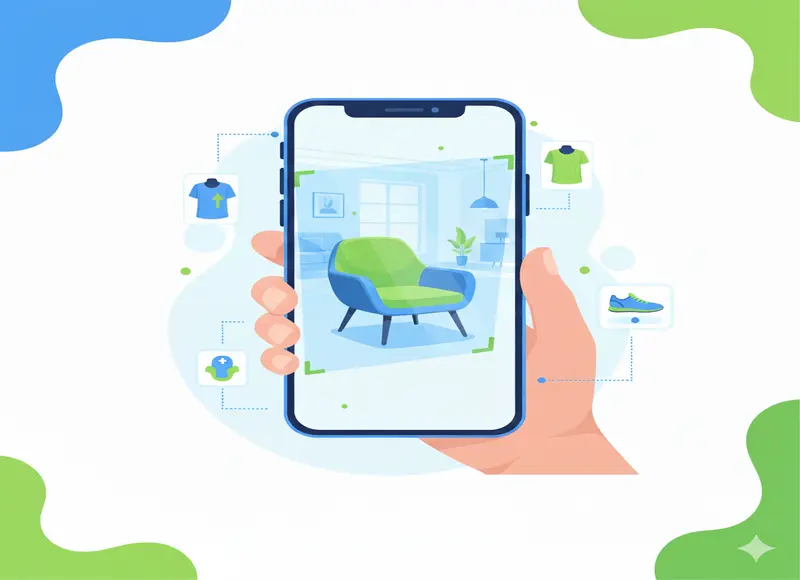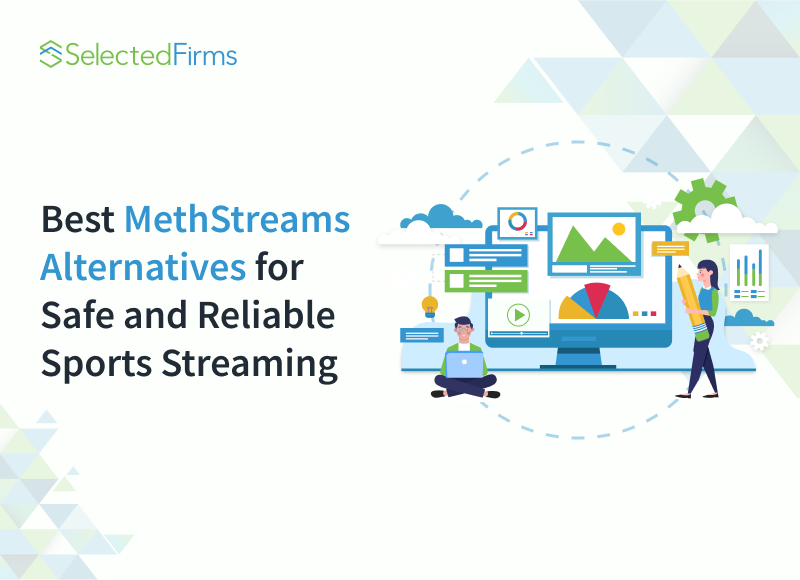Table of Contents
Meet the top US companies that turn outdated systems into modern, powerful solutions built for today’s business needs.

As technology gets better, businesses that use old software are reaching a breaking point. You might think that only businesses that benefit from modernizing should do so, but you might be wrong. Once great, legacy systems are now a burden that slows growth, stifles innovation, and raises costs.
We’ve prepared for you the best legacy modernization companies in the USA that push the industry to its boundaries and beyond. So, they won't let you down if you trust them. Let's get going.
Why Should I Modernize Outdated Systems?
Legacy modernization is a must if companies hope to maintain their competitiveness, lower risk, and foster future expansion. Here’s a full range of reasons to start modernization right away:
- Performance Bottlenecks: Slow processing rates, system breakdowns, and integration issues are common problems with legacy systems.
- High Maintenance Costs: Inefficient architectures, technological debt, and a lack of vendor support lead to more expensive maintenance.
- Scalability Issues: Only cloud-native solutions enable dynamic scaling, ensuring high availability and dependability.
- Security Risks: Legacy programs have numerous code flaws, making them vulnerable to security breaches.
- Noncompliance Risks: 61% of telco leaders believe regulatory risks will significantly impact their business’s performance over the coming year.
- Limitations of the User Experience: Older apps have subpar UI/UX, which lowers user engagement and satisfaction.
The List of 10 US-based Legacy Modernization Companies
Want to update old systems without interfering with business operations? These ten US-based legacy systems modernization companies can help you stay competitive.
1. Devox Software

Devox Software is an international full-cycle software development company, offering comprehensive legacy application modernization solutions. Their focus is on AI-enhanced tools to transform legacy apps into cloud-native, scalable solutions that will last. Being experts in using AI-powered technologies, they quickly change old apps into cloud-native, scalable solutions that make a difference in the market.
By speeding up the audit, refactoring, and testing procedures by 30%, their AI Solution Accelerator™ lowers risk and saves time. Furthermore, Devox Software ensures that moving from old Java or .NET systems to containerized microservices on Azure or AWS goes smoothly. As a result, we can say that Devox Software:
- Great for: Businesses that are medium to big that want to use AI and cloud-native technology to modernize.
- Pros: Full-stack delivery, Cloud Expertise, AI-driven Refactoring, and Robust DevOps.
- Cons: The brand's exposure and recognition might be better.
2. Inoxoft
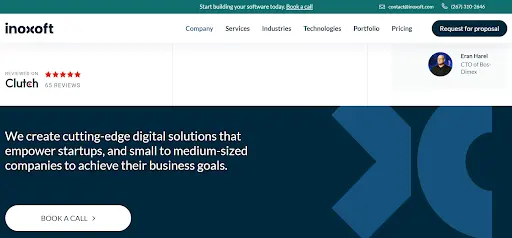
Inoxoft's modernization initiatives are practical because they combine discovery and architecture with iterative delivery. A typical project starts with a simple technical review, a design for the desired future state (usually using cloud services like AWS or Azure, containerized services, and improving CI/CD processes), and a plan that prioritizes important user experiences for gradual updates.
Moreover, their teams combine data science with application engineering, so when they clean up old data, they frequently also add analytics, improve reporting, and update user experience. This is helpful in fields like healthcare, finance, logistics, and real estate, where data quality, security, and availability are important.
They are a good choice when you require both senior supervision and a quick build team. They can help you set up APIs over old cores, replace fragile ETL with controlled data pipelines, divide monolith hotspots into service slices, and modernize mobile applications without stopping operations. Expect delivery in sprints, unambiguous handovers, and quantifiable KPIs like p95 latency or how often releases happen.
However, there are trade-offs. Enterprise-level, multi-platform rehabs may need more oversight and verification of complicated cutovers. If you're thinking about using Inoxoft for a business-level program, ask for recent references with regulated workloads, examples of migrations with no downtime, and documents like a risk register, migration plan, and rollback strategy.
- Great for: New companies, businesses that are already doing well, and businesses that are mobile-first.
- Pros: Emphasis on scalability, quick delivery, and industry-specific expertise.
- Cons: There aren't many case studies of legacy transformation at the corporate level.
3. Apadmi Ltd.
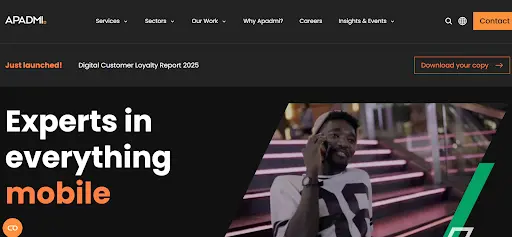
Apadmi's main focus is on end-to-end digital transformation with a strong mobile core. They then use that skill to modernize business applications. Most of the time, engagements start with finding out about the product and user experience, doing technical audits of current applications and APIs, and coming up with a target architecture that connects strong mobile clients with scalable back ends.
In particular, they are good at moving from old mobile stacks to new toolchains, bringing together applications that are spread out, and making sure that CRMs, payments, and data platforms can all work together securely.
Furthermore, they really excel when it comes to making a difference for customers. Apadmi's teams leverage data-driven UX, analytics, and testing to increase engagement, retention, and conversion while lowering crash rates and time to release.
If you’re modernizing a customer-facing portfolio, expect polished UX, rigorous accessibility, and enterprise delivery discipline: clear roadmaps, measurable KPIs, and a clean handover to internal teams.
- Ideal for: Digital platforms that are mobile-first and that customers can see.
- Pros: Great UX and mobile design, solid product thinking, and a strict delivery and integration discipline for businesses.
- Cons: There aren't many case studies of legacy transformation at the corporate level.
4. Unqork
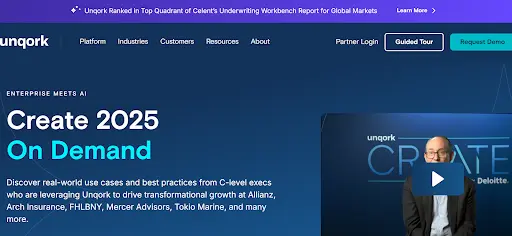
Unqork combines a visual, schema-driven builder (for data models, workflows, and UI) with enterprise guardrails (for RBAC/SSO, audit logs, encryption, and policy checks). This lets teams quickly move old front ends to new platforms while managing services via APIs. The usual steps are to expose historical systems using adapters, redesign journeys in Unqork, move integrations to the outside, add testing and observability, and finally do phase cutovers.
- Great for: Regulated industries that need to quickly and legally replace apps (like banks, hospitals, and the public sector), particularly those that use a lot of forms for workflows, case management, onboarding, and approvals.
- Pros: Fast because of prebuilt components and patterns; robust governance and compliance features; API-first integration; less reliance on hard-to-find programmers; and faster UI/UX refreshes with versioned, tested processes.
- Cons: Dangers of vendor lock-in; not very flexible for very bespoke logic, requires a lot of computing power, or is an edge case; might cost a lot at scale; needs platform governance to keep things from getting out of hand.
5. Euvic, Inc.
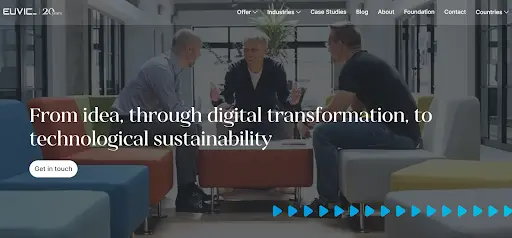
Euvic uses a systematic, program-management approach to do large-scale legacy recovery. Most projects start with a discovery and assessment phase that includes things like a codebase audit, an architectural review, data/ETL mapping, SLA and incident analysis. This phase leads to a goal state, which is usually a cloud-ready, modular architecture with standard CI/CD, observability, and security baselines.
They then construct "waves" that mix refactor/replatform tasks with safeguards that run in parallel and strong rollback points. This keeps business operations steady as the risk goes down.
Some of its strengths are that it has a lot of talents in backend, data, QA/automation, and DevOps, and it can create multi-team pods for complicated portfolios. This is helpful for breaking apart monoliths, updating data platforms, merging CRMs and ERPs, or moving on-prem workloads to managed cloud services.
Euvic’s size helps with keeping up speed and keeping costs down. Playbooks and governance make sure that delivery is uniform across streams.
- Great for: Making big modifications to old systems and running global programs that need to be able to predictably grow and stay the same.
- Pros: A well-planned process for modernization, a broad and adaptable personnel pool, competitive economics onshore and offshore, and experienced collaboration across several teams.
- Cons: Distributed delivery makes it harder to coordinate; big projects do better with an empowered product owner, a defined RACI, and close communication between your architects and Euvic's leaders. For mission-critical cutovers, check that there is on-call coverage, clear escalation pathways, and strict change management.
6. Taazaa

Taazaa's method for bringing old applications back to life is to put the user first. They turn old systems into secure, scalable platforms with a modern user experience. They are well-known for their quick work and success in the healthcare business. It is easier for them to modernize digitally in regulated settings since they are clear, focused, and always there to help.
- Great for: Platforms that put users first, healthcare systems, and teams that are flexible.
- Pros: knowledge of rules, a flexible approach, and a focus on current UI/UX.
- Cons: Works well for small to medium-sized organizations and projects in the mid-market.
7. The Smyth Group

The Smyth Group is a small U.S. boutique agency that focuses on practical, business-first upgrading. Usually, engagements start with a light discovery phase and a minimal target design that focuses on the processes that citizens, students, or internal teams really use.
They want APIs that are built on contracts, little changes to high-value pathways, and short feedback loops with product owners so that releases happen fast and don't get in the way of business. You should expect comprehensive documentation, tested segments, and an easy-to-use interface that fulfills the WCAG and security standards that are prevalent in public and educational settings.
Common cases include replacing fragile forms with stable web applications, bringing together several tools into one portal, adding observability and CI/CD to speed up safe releases, and moving tiny monoliths to service boundaries that are easier to manage. Delivery is open and collaborative, and it has clear goals, such as fewer tickets, quicker response times, and easier transfer to in-house IT.
- Great for: Government, education, and medium-sized businesses that need to modernize without too much trouble.
- Pros: personalized service, quick response, experienced engineers who can speak effectively, and a clear route to keeping things up to date.
- Cons: Not particularly good at handling extremely big, multi-platform projects; for vast portfolios and 24/7 operations, check on-call coverage, scale-up alternatives, and a partner ecosystem for overflow.
8. DevCom
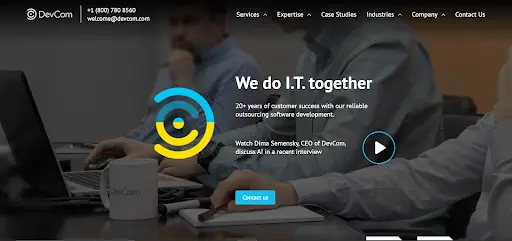
Among the best legacy modernization companies in the US, DevCom combines technical know-how with strategic business sense to deliver full cloud conversions, SaaS upgrades, and CRM solutions. They help with the precise and important modernization of systems and are known for their great DevOps and bespoke CRM solutions. This is the company that truly knows what it does and loves it.
- Great for: Full-cycle delivery, moving to the cloud, and updating your CRM.
- Pros: Great DevOps abilities and a good fit with the company's goals.
- Cons: Not everyone from the team is in the US.
9. DevTeamSpace
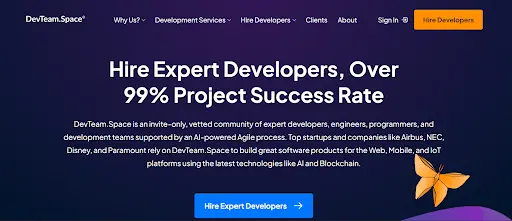
DevTeamSpace modernizes via a managed-team model, with a dedicated PM and tech lead overseeing verified engineers, a consistent SDLC, and common tools for code quality, CI/CD, and observability. This structure helps make old back ends more stable, breaking up monolithic services, making data pipelines more secure, and adding AI/ML where it really makes a difference.
They work best when you want to be able to hold someone responsible for delivery without having to build and manage a bench yourself, particularly for systems with AI or significant backend rehabilitation. Expect good teamwork, reports that are simple to understand, and the ability to easily add new team members.
The trade-off is flexibility: you have to follow DevTeamSpace's rules and pay structure, which might be pricier than hiring freelancers on an as-needed basis and may restrict your ability to use unusual stacks or custom methods. If you're thinking about them, try out a limited, high-impact workflow, check the model governance and data privacy for AI features, and make sure you know how to leave, who owns the IP, and how quickly the team can grow or shrink.
- Perfect for: AI-integrated platforms and enterprise-grade backend modernization.
- Pros: Well-prepared engineers, organized delivery, and expandable teams.
- Cons: The platform restricts flexibility and costs more than usual for freelancing teams.
10. Avanade
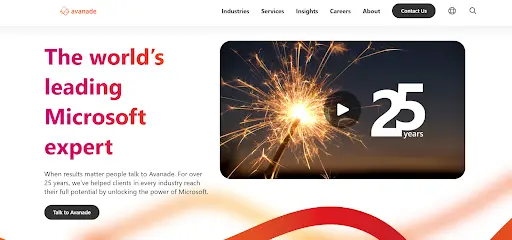
Avanade is a joint venture between Accenture and Microsoft that helps Fortune 500 companies modernize their old systems, add AI, and move to Azure. They help businesses modernize important systems for performance, security, and scalability by sharing their unique knowledge of Microsoft technology. The name says it all and needs no explanation, so let’s sum up:
- Best for: Businesses who want to modernize a lot and put Microsoft first.
- Pros: It is available all around the world and is technically advanced.
- Cons: It's expensive and not as good for startups or ecosystems that don't use Microsoft.
How Was the Ranking Formed?
We gave each company a score in five areas:
- experience (years, team seniority, work in a regulated industry),
- technology stack (cloud, containerization, data, security, AI enablement),
- client portfolio (breadth, recognizable brands, repeat business),
- modernization expertise (audits, strangler-fig patterns, re-platforming, refactoring, zero-downtime delivery),
- service quality (certifications, SLAs, CSAT/NPS, governance).
We gave the most weight to modernization knowledge and service quality, followed by experience, portfolio, and stack. Additionally, public case studies, partner lists, certificates, testimonials, and third-party references were all used as proof.
Of course, not everything was clear on the superficial level of assessment. That’s why we added assumptions on the basis of the presented data. So, if you need a deeper analysis tailored to your case, check the values you need.
How to Choose the Best Vendor?
Here's a crisp, ready-to-use version you may find useful when choosing the best legacy modernization company in the US for you:
- Check Tech Stack: Get their tools and reference architectures. You need to seek experience in Infrastructure as Code (IaC) using Terraform, Kubernetes (K8s), blue/green deployment strategies, feature flags, observability-by-default practices, and AI-assisted processes.
- Look into Your Industry Real-Life Examples: You need to know the baseline and goal metrics, the restrictions, the risks, and how they were handled. Prefer projects from the last 24 months that have clearly identified customers, achieved victories in regulated contexts, and demonstrated quantifiable changes.
- Choose Delivery Model: Make sure that the time zone overlap and governance match the level of complexity. For core refactors and cutovers, it is essential to demand a hybrid approach that includes senior onshore and nearshore leaders, cost-effective offshore execution, one responsible project manager (PM), and unified continuous integration/continuous deployment (CI/CD) and quality assurance (QA) gates.
Last but not least, we need to plan for risk and change. A good vendor always has a plan, including discovery, contract-first API, wave plan, parallel run, controlled cutover, and hypercare.
Final Thoughts: Why Experience Matters in Legacy Modernization
Because a legacy system's modernization is risky, companies may put it off because they are worried about the downtime. However, downtime due to modernization is less likely when a pro comes in, understanding the issues involved and prioritizing risk reduction.
That's exactly what the firms indicated above do. These best legacy modernization companies help you transform old software into an asset again, which may help you stay ahead of the competition.
Recent Blogs
12 Best MethStreams Alternatives for Safe and Reliable Sports Streaming in 2026
-
18 Dec 2025
-
12 Min
-
36
Real World Digital Transformation Use Cases in Real Estate, Tech, and Recruiting
-
17 Dec 2025
-
6 Min
-
143

